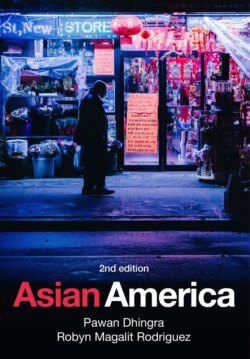Читать книгу Asian America - Pawan Dhingra - Страница 41
From social constructions to stereotypes, prejudice, and discrimination
ОглавлениеAs people “define situations as real, they are real in their consequences,” so goes the famous quote by sociologists W. I. Thomas and Dorothy Swaine Thomas. Regardless of whether race, ethnicity, gender, and sexual orientation are socially constructed, people believe them to be real and act accordingly, leading to real effects. Stereotypes, prejudice, and discrimination are the results of the presumed real nature of these social categories. Stereotypes are blanket generalizations about an ethnic or racial group that reduce its heterogeneity to a few characteristics, which become difficult to refute despite evidence to the contrary (Marger 1995). They originate from the media, statements, and practices of family members and others, and everyday observations filtered through preformed notions of group distinctiveness. Prejudice refers to “an arbitrary belief or feeling toward an ethnic group or its individual members” (Marger 1995: 71). Prejudice exists in one’s head. It is impossible to know of someone’s prejudice until that person expresses it.
Stereotypes and prejudice are practically meaningless unless they are acted upon, that is, unless they lead to discrimination. Discrimination refers to behaviors, including verbal, that attempt to limit a group’s resources in favor of one’s own group. The most commonly cited form of discrimination is interpersonal, wherein one person prevents another from attaining a goal because of hatred towards that person’s race, gender, or sexuality. Hate crimes (discussed more below) are extreme examples of discriminatory behavior. Yet possibly more of a problem is institutional discrimination.
